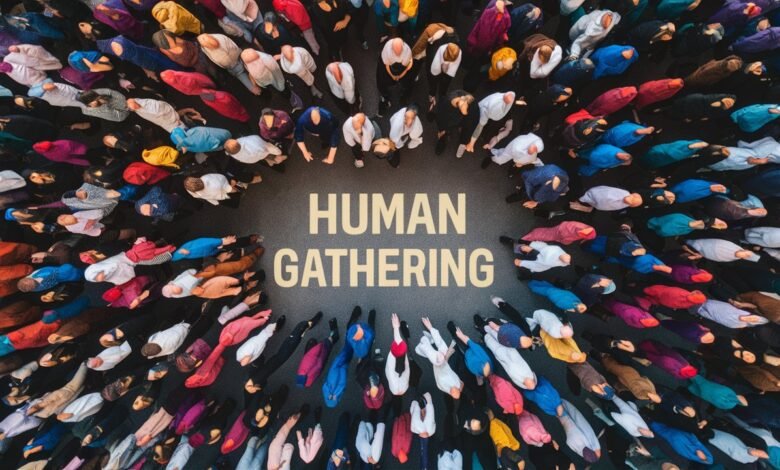“Human gathering fake to Tell When People Aren’t Really Gathering”

Hey there, friends! Today, let’s chat about something super interesting: human gathering fake! Have you ever been to a party or a meeting and felt like something just wasn’t right? Like maybe everyone was smiling a little too wide or laughing a little too loudly? Well, you might have stumbled upon a fake human gathering without even realizing it! But don’t worry, because in this blog post, we’re going to learn all about how to spot these fake gatherings and what to do about them. So grab your detective hats and let’s dive in!
Unraveling the Mystery of Fake Gatherings
Have you ever wondered why some gatherings just don’t feel right? It’s like everyone is playing a game, but nobody knows the rules. Well, that’s because you might be in the midst of a fake gathering! But fear not, little detectives, because we’re here to crack the case. Fake gatherings happen when people come together, but their hearts aren’t really in it. They might be there physically, but mentally, they’re off in another world.
The key to understanding fake gatherings is to look for the signs. Keep an eye out for forced smiles and awkward silences. These gatherings often lack genuine laughter and heartfelt conversations. Instead, you might notice people checking their phones constantly or glancing around the room nervously. It’s like they’re all waiting for something, but nobody knows what.
But why do people fake gatherings in the first place? Well, there could be many reasons. Sometimes, it’s because they feel pressured to attend. Other times, it’s because they want to impress others or appear more popular than they really are. Whatever the reason, one thing’s for sure: fake gatherings can leave everyone feeling empty and disconnected. So next time you find yourself at a gathering that feels off, trust your instincts and don’t be afraid to make a graceful exit.
Spotting the Telltale Signs
Let’s put on our detective hats and learn how to spot the telltale signs of a fake gathering. One clue to look for is the lack of genuine excitement. In a real gathering, people are buzzing with energy and enthusiasm. But in a fake one, the atmosphere feels flat and dull. You might notice people fidgeting in their seats or avoiding eye contact altogether. These are all red flags that something isn’t quite right.
Another sign to watch out for is the absence of meaningful conversation. In a genuine gathering, people connect on a deeper level. They share stories, exchange ideas, and support each other. But in a fake gathering, conversation is often superficial and forced. You might hear people gossiping or talking about trivial things like the weather. It’s like they’re going through the motions without any real connection.
Body language can also reveal a lot about the authenticity of a gathering. Pay attention to how people interact with each other. In a real gathering, there’s warmth and openness in the way people move and gesture.human gathering fake But in a fake one, body language can be stiff and guarded. You might notice people standing apart from each other or crossing their arms defensively. These subtle cues can tell you a lot about the true nature of the gathering.
So what should you do if you find yourself in the midst of a fake gathering? Well, the first step is to trust your instincts. If something feels off, it probably is. Don’t feel obligated to stay if you’re not enjoying yourself. Politely excuse yourself and leave if you need to. Remember, it’s better to spend your time with people who lift you up and make you feel truly welcome.
human gathering fake: The Psychology Behind Fake Gatherings
Ever wonder what goes on in people’s minds when they fake gatherings? Let’s dive into the fascinating world of psychology to find out! One reason people fake gatherings is because they want to fit in. It’s a primal instinct to want to belong to a group, even if that group isn’t exactly genuine. So they put on a show and pretend to be something they’re not, just to avoid feeling left out.
Another psychological human gathering fake factor at play is the fear of rejection. People might fake gatherings because they’re afraid of being judged or criticized by others. It’s like they’re wearing a mask to hide their true selves, for fear of not being accepted. But ironically, by pretending to be someone they’re not, they end up feeling even more isolated and disconnected.
In some cases, people fake gatherings as a form of self-protection. They might have been hurt or betrayed in the past, so they put up walls to shield themselves from further pain. By keeping things superficial and surface-level, they avoid getting too emotionally invested in others. But in the process, they miss out on the genuine connections that make life truly meaningful.
Understanding the psychology behind fake gatherings can help us empathize with others and navigate social situations more effectively. Instead of judging people for their behavior, we can try to understand the underlying reasons behind it. And who knows, maybe by showing a little compassion and understanding, we can help turn fake gatherings into real ones filled with warmth and authenticity.
The Role of Social Media in Fake Gatherings
Let’s talk about the elephant in the room: social media. In today’s digital age, platforms like Instagram and Facebook play a huge role in shaping our social interactions. But they can also contribute to the rise of fake gatherings. How so? Well, think about it. On social media, everyone presents the highlight reel of their lives. They carefully curate their photos and posts to create the illusion of a perfect, exciting life.
This constant pressure to appear happy and successful can spill over into real-life gatherings. People feel like they have to keep up appearances and maintain a certain image, even if it’s not authentic. So they stage elaborate events and invite tons of people just for the sake of appearances. But behind the scenes, it’s all smoke and mirrors.
Another way social media influences fake gatherings is by distorting our perception of reality. We see all these glamorous photos of people having fun and assume that’s what real gatherings look like. But in reality, those photos are often staged or heavily edited. We’re comparing our everyday lives to someone else’s highlight reel, and it’s setting unrealistic expectations.
But it’s not all doom and gloom. Social media can also be a force for good when used mindfully. Instead of chasing likes and followers, we can use it as a tool to connect with others authentically. We can share our struggles and vulnerabilities, and in doing so, create genuine connections that transcend the superficiality of fake gatherings. So let’s use social media wisely and remember that real life is far more precious than any filtered photo.
Conclusion:
So there you have it, little detectives! human gathering fake We’ve journeyed through the world of fake gatherings and learned how to spot them from a mile away. Remember, gatherings should be about genuine connections and shared experiences, not just putting on a show for the sake of appearances.
But fear not, because armed with your newfound knowledge, you can navigate social situations with confidence and grace. Trust your instincts, seek out real connections, and don’t be afraid to walk away from gatherings that don’t feel right. After all, life’s too short for fake smiles and empty conversations. So go forth and gather authentically, my friends!



